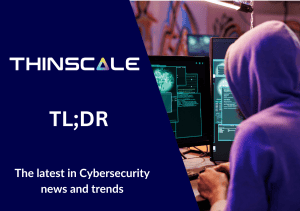Outsourced customer experience (CX), business process outsourcing (BPO), and contact centre providers have long championed their ability to adhere to data protection and privacy regulations strictly. However, with seasonal contact centre scaling, a COVID-related surge in outsourced projects, and a seismic influx of customer data comes an increase in security and compliance risks on both sides of the partnership.
So, as security and IT leaders seek to ensure end-to-end digital compliance to protect customer data, what risks should organisations be on the lookout for, how can they impact their business, and what solutions are available to ensure all outsourced employees and devices are fully secured?
Assessing the Risk of Insecure Endpoints
One of the most damaging digital compliance issues that outsourcers face is unauthorised access to customer data and payment information, often caused by network security flaws. This risk has been compounded by an expanding global remote workforce, with CX agents working from home or in places with vulnerable public networks.
Most BPO companies follow the data and compliance standards set by institutions such as ISO and HIPAA. Even when employees work remotely, they ensure that everyone follows these standards and processes. Still, without a VPN and strong firewall settings, agents’ IP addresses, locations, and data are exposed to malicious activities online.
Under data protection laws, client organisations are fully responsible for safeguarding customer data as part of an outsourcing partnership — and they can pay a hefty price in the event of a data breach.
For example, under the General Data Protection Regulation (GDPR), the fines for data breaches can reach up to €20 million or 4% of the company’s annual worldwide turnover, whichever is the highest.
What Should Organisations Look for in Outsourcers?
For most regulations, outsourcers should be taking specific steps to ensure digital compliance.
Suppose a contact centre intends to accept card payments, for example. In that case, any software installed on agent workstations — both company-owned and employee-owned — needs a secure, PCI-compliant framework that allows for the safe storing, processing, and transmitting of cardholder data.
Look for providers that perform regular data security audits and risk assessments to identify potential risks and predict data security breaches. Ideally, outsourcers should also provide consistent employee training in compliance-related issues.
When agents have more profound knowledge of current data regulations, they can act as the first line of defence against non-compliance, preventing legal action and costly fines while providing even better CX.
Three Choices in End-to-End Outsourcer Security
Once organisations understand their partners’ digital compliance practices, there are usually three typical options available to them.
1. Outsourcer provides all hardware and security
The first is to choose an outsourcer with existing hardware, such as in-house workstations and network infrastructure. While this is a cheap and hassle-free option, organisations often have little to no visibility over the outsourcers security framework, so there’s no way to guarantee ongoing data and network security. As a result, it’s a risky choice, no matter how good your outsourcer is.
2. You provide all hardware and security
The second is to provide all the hardware and applications yourself, which means procuring, preparing, and shipping hundreds of machines. While this route guarantees complete control over the hardware and increased visibility, organisations will face challenges like device shortages and costly shipping delays. Plus, there’s the headache of recovering those devices at the end of the contract.
3. Use SRW to secure and manage 3rd party devices
The third (and most optimal) way to do this is with Secure Remote Worker, a solution that hundreds of organisations already use to secure their outsourced team members. Companies can install this light-touch solution instantly and remotely on any device, allowing outsourced workers to work securely through a virtual desktop infrastructure environment. In addition, SRW gives IT teams complete control over permissions and protection while also providing an overview of employee performance.
SRW is cost-effective and secure
Organisations can use SRW to leverage outsourcers with existing hardware and even facilitate BYOD (bring-your-own-device), resulting in significant cost savings and guaranteeing endpoint security. It also opens up the ability to hire globally, tapping into the growing pool of remote employees for rapid hiring and onboarding.
Successful contact centre outsourcing partnerships rely on solid business relationships, great talent, and robust technology stacks to keep the wheels turning. But, irrespective of the outsourcer’s security framework, why take any chances? Instead, implement a light-touch security solution that protects you and your partners while also giving you a window into how your budget is being spent.
Download this datasheet for details on how Secure Remote Worker can protect your WaH environment, or book a demo to see it in action.



